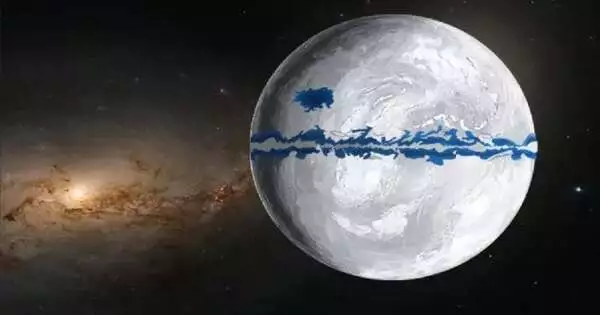The Earth was so cold many millions of years ago that the majority of its surface was covered in ice. But it’s possible that the hard freeze was sludgier than previously believed.
According to the well-known “Snowball Earth” theory, our planet appears to be a perfect sphere from space, with ice covering both land and water.
It makes use of hints like deposits left behind by glaciers close to the equator. Ice extending that far from the poles suggests that much of our planet was once frozen.
But there has long been debate over how thorough the cover was, with some believing that pockets of slush or open ocean remained, allowing oxygen to seep in and fostering the growth of life.
“We discovered evidence of ice-free environments at mid-northern paleolatitudes (before continental drift),”
Huyue Song, who helped lead the research,
A new study that was just released in the journal Nature Communications lends support to that hypothesis and raises the possibility that these tundra oases may have existed much further north than previously thought.
The proof is found in a thin layer of dark shale that was likely under water during the Marinoan ice age, which started about 650 million years ago.
Shale in southern China’s Nantuo Formation serves as a kind of archive for historical oceanic conditions.
Scientists can determine whether oxygen was leaking into the ocean and lifeforms were producing nitrogen by examining the concentrations of elements like iron and the presence of nitrogen.
Huyue Song, who assisted in leading the study and found evidence of ice-free conditions at mid-northern paleolatitudes (locations before continental drift), told AFP.
“Up until now, only peri-equatorial regions had been found to have ice-free areas.”.
“Patchy ice-free areas may have existed much more widely,” added Song, a professor at the China University of Geosciences, Wuhan, in place of a “narrow ice-free belt” running through the center of the planet.
The results add to previous research from locations ranging from Australia to Brazil that indicates life persisted in some areas of the planet while the majority of it was in a deep freeze.
The study published on Tuesday suggests that these incubators may have even aided in the “rapid rebound of the biosphere” at the end of the ice age.
The project, which lasted a total of four years, involved sampling at a remote location in Hubei province’s Shennongjia region, some 500 kilometers from Song’s base in Wuhan.
In Song’s opinion, the research will advance knowledge of how the climate of our planet functions as well as the history of life on Earth and how it has evolved and persisted there.
The ice ages on Earth may seem like a distant past, but Song contends that we can learn from them as our planet is currently undergoing new, extreme climate change.
It “provides insight into how life survived extreme climate events—a topic that will become of increasing relevance as modern climate change intensifies,” he said.
More information: Huyue Song, Mid-latitudinal habitable environment for marine eukaryotes during the waning stage of the Marinoan snowball glaciation, Nature Communications (2023). DOI: 10.1038/s41467-023-37172-x. www.nature.com/articles/s41467-023-37172-x





